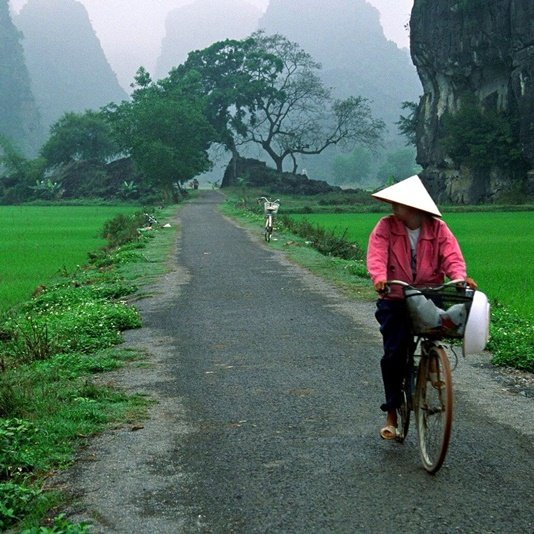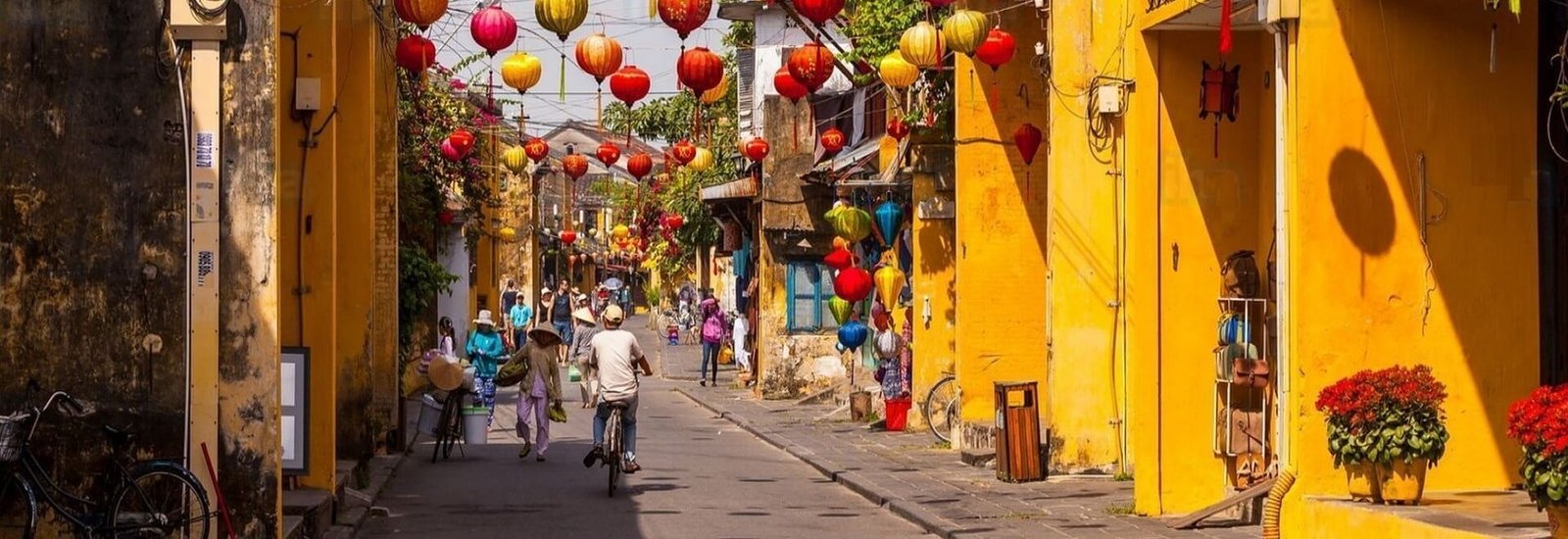Colorful Hoi An
The old town of Hoi An, about 25 kilometers southeast of Da Nang, on the banks of the Song Thu Bon (Thu Bon river). This charming town was in the past a prosperous port and meeting point between East and West in what during the time of the Nguyen lords .
Hoi An is mentioned in the writings of Western travelers of the seventeenth and eighteenth centuries with the name Faifo or Hai Po.
At the beginning of the 16th century, the Portuguese arrived to explore the coast of Hoi An. Then the Chinese, the Japanese, the Dutch, the British and the French, with them came the first missionaries: Italians, Portuguese, French and Spanish. One of them was the French Jesuit Alexandre de Rhodes, who introduced the Latin alphabet into the Vietnamese language.
For several centuries, Hoi An was one of the most active commercial ports in Southeast Asia and an important center of cultural exchange between East and West.
Today Hoi An is a quiet town of about 75,000 inhabitants, of which 12,000 live in the old town, which has been restored and renovated. Many of the older houses, built with wooden beams, carved doors and open and airy rooms, are now souvenir shops that look like museums.
The oldest part of the city is the southern sector, on the banks of the SongThu Bon. The street Le Loi that runs perpendicular to the river, was the first, traced four centuries ago.
The Japanese district, with its covered bridge and its Japanese-style shops and houses, grew half a century later on the west side of the city, followed by the Cantonese district 50 years later.
Hoi An’s past is magnificently preserved in its architecture. The old town is a fascinating mix of temples, pagodas, communal houses, sanctuaries, clan residences, shops and homes.
Danang
In the center of Vietnam is Da Nang, which was a strategic axis in the wars of the 20th century. And nearby Hoi An has become a fashionable tourist destination.
The province of Quang Nam Da Nang is located about 800 kilometers from Hanoi and several kilometers from Ho Chi Minh , separated from Laos to the west by the Truong Son mountains.
More than 60% of its territory is covered in forests, the drive from Hue to Da Nang provides some of the most spectacular scenery in Vietnam , and Highway 1 runs vertiginous up, down and along mountains along the coast.
The capital of the province, Da Nang , located on the west bank of the Song Han (Han River) has gone from being a fishing village to become an important port city, the fourth largest in the country, with 400 000 inhabitants. Although it is not a city as exciting as Hanoi , the capital of Vietnam , or as the commercial axis of South Ho Chi Minh , Da Nang is rapidly becoming a flourishing metropolis.
At present some airlines fly to Da Nang airport . However, at the moment the offer of good accommodation is quite limited, so the best option is to spend the night in Hoi An .
From Da Nang to Hoi An
South of Da Nang, towards the coast, there are five great mountains : Ngu Hanh Son (Marble Mountains), the mountains of the Five Elements : Kim Son (metal), Thuy Son (water), Moc Son (wood), Hoa Son (fire) and Tho Son (earth).
These mountains were in the past a group of five islets that floated off the coast, but because of the sediments deposited over the centuries, they are now linked to the continent. Some mysterious caves in the mountains house altars dedicated to the Buddha, bodhisattvas and the different deities that appear in the legends of the inhabitants of this region, the most famous of which is Thuy Son .
The Grutas , in which the Cham celebrated their sacred rituals, are still religious sanctuaries. It is possible to visit several temples, including Tam Thi , built in 1852, and Linh Ung .
These mountains constitute, likewise, a valuable quarry of red, white and blue-green marble. At the foot of them, skilled stonemasons chisel a variety of art objects. At the edge of the sea stretches a long beautiful and quiet beach. To the south is Bai Bien Non Nuoc , which many foreigners will know by the name of “China Beach”, near the village of Non Nuoc . This “beach of China ” was the place where the American soldiers went to rest and have fun during the war. However, some people claim that the authentic “China Beach” lies to the north, in My Khe.




